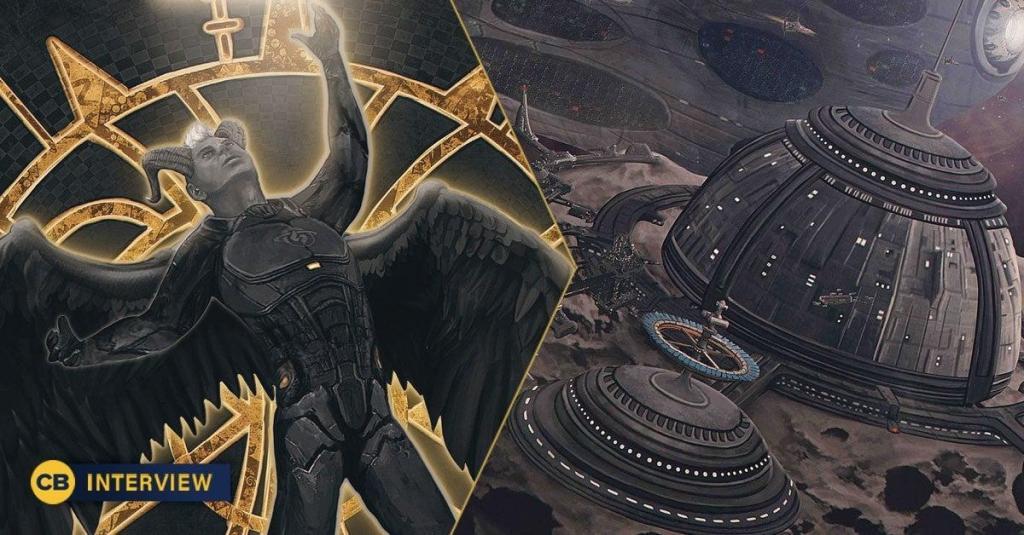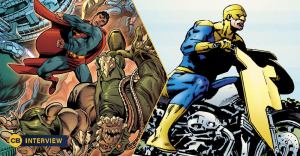The world of science fiction is a wondrous place, full of fantastical tales of exploring the galaxy in a world full of imaginative technology and alien life. That said, sometimes those worlds, as fantastical as they are, can feel a bit hollow and unrealistic. Sure an aspect of science fiction is pushing the envelope on what is actually possible, but for those ideas to truly resonate, you need a solid foundation in facts and science. That’s where Heavy Metal Magazine CEO Matthew Medney and Lockheed Martin Aerospace Engineer John Connelly’s Beyond Kuiper comes in, a sprawling cosmic story full of new worlds, new technology, and intriguing alien civilizations to meet, and the best part is all of it is rooted in actual science. Now Beyond Kuiper is getting a spiffy new Galactic Edition from Simon and Schuster, and we’ve got a preview of the next book in the series and a breakdown of the book from Medney and Connelly, and you can check it all out starting below and on the next slide.
Videos by ComicBook.com
This has been a work of love since 2015, and it all came into being thanks to a joke and a dose of Star Wars. “It started because John and I became closer than brothers through the music scene and became friends through crazy one in a million chance encounters,” Medney said. “And as I was diving deeper into the entertainment and narrative storytelling world, John was diving deeper into being a critical piece of the aerospace industry and we had an idea. When was it, John? 2015? Just like a joke really at first. It really first started off as a joke where we’re like, ‘What if every idea…’ Or what was it John? I’m having trouble remembering. What was it with the aliens would be watching or Star Wars would actually be a real thing somewhere else?”
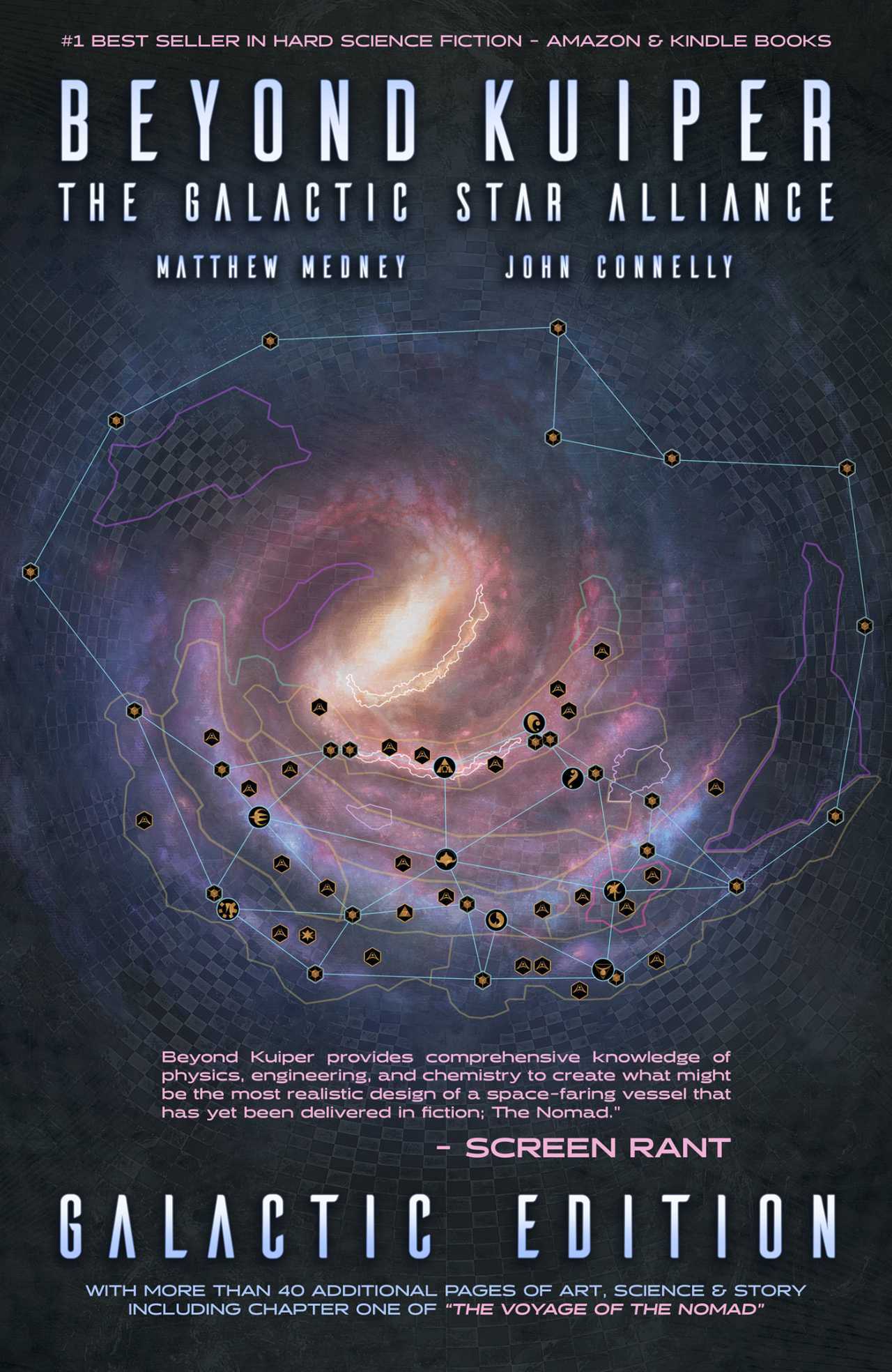
“Oh yeah. Another guess that if there was every probability played out in terms of quantum theory and somewhere out there, there would be a galaxy where everything from our fiction would all be happening,” Connelly said.
“It’s a grossly large piece of ice and we start chiseling it down, and as we got closer and closer to what we were trying to sculpt, we realized that there was actually a more holistic ideal about space and about beings and about how to think about humanity in the construct of the cosmos,” Medney said. “And then John used his science mind to take outrageous ideas that we both came up with and make them out as a pin to real science if possible.”
“Just to build off of that a little bit more, for Kuiper, the biggest thing was Matt and I were just wholeheartedly dissatisfied with the fact that humans are alone in the universe and it just is preposterous,” Connelly said. “Again, the number of possible worlds that… especially back in 2015, we were discovering… Matthew was getting them almost weekly or monthly, you were hearing about more and more possibilities. And we surmised, looking at the human civilization, just like, ‘Yeah. Aliens are out there.’ It has been long thought, and that’s what set the impetus for the whole story and for the broader holistic message that Matt was talking about, the idea that in the normative space and time that civilizations endure for so long to meet each other, what are the criteria that have to exist for that to happen?”
Hit the next slide to learn even more about this world and to see new images from Voyage of the Nomad, and you can pre-order the Beyond Kuiper: The Galactic Edition right here, which will hit stores on July 27th.
Polarizing Notes
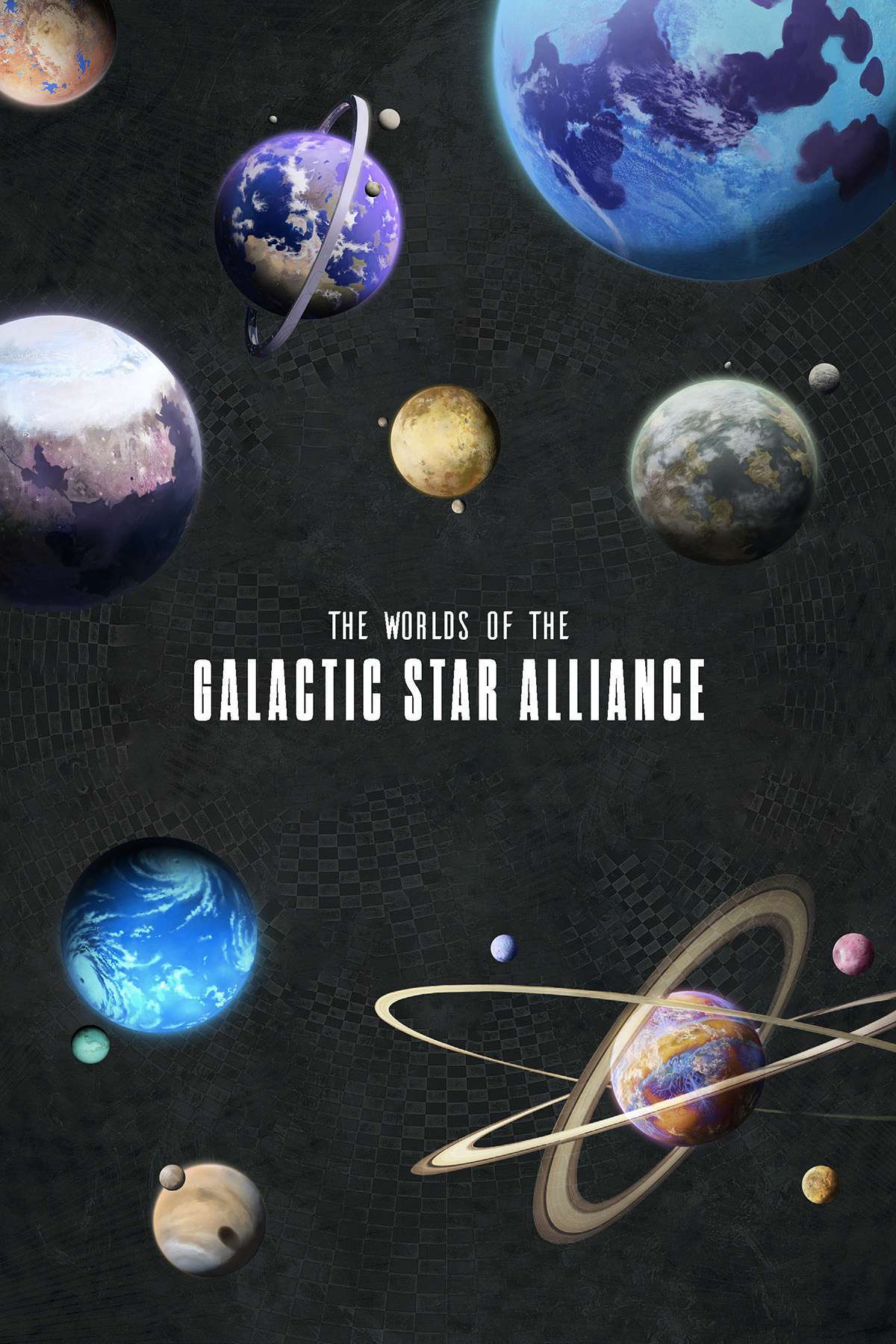
One of the most impressive aspects of the book is how well thought out all of it is, and in the collected edition you get all of the different terms and species explained in the footnotes, which actually turned out to be the most polarizing element of the book.
“That was so polarizing,” Connelly said. “That was the single greatest polarizing element from the book that we received this feedback, was footnotes.”
That genuinely surprised me, but it indeed was the case. “Oh, Matt. You have no idea. ‘It takes you out, why would you put them there?’ I don’t know. I know this is on the record, but for me, I’d rather have all of the information of a given world to be able to make my own assertion rather than be given half of the information and make a decision based on part of the picture,” Medney said.
“We did it for us. We did it for the people like you. We would have loved if the Silmarillion…John and I would always talk about wouldn’t it have been just so much easier if those notes were in the footers so that you could actually follow them in the places that Tolkien was trying to expand on? That was the impetus for them. We were inspired by The Silmarillion from Tolkien as a way in which to give important exposition of facts without having to dilute the story,” Medney said.
“We wrote a book fully with the understanding that it needed to be understood without any of the footnotes, and we have decided that for the second book that we’re going to put a disclaimer somewhere near the front which affirm that you don’t have to read them if you don’t want to,” Connelly said.
Embracing Science
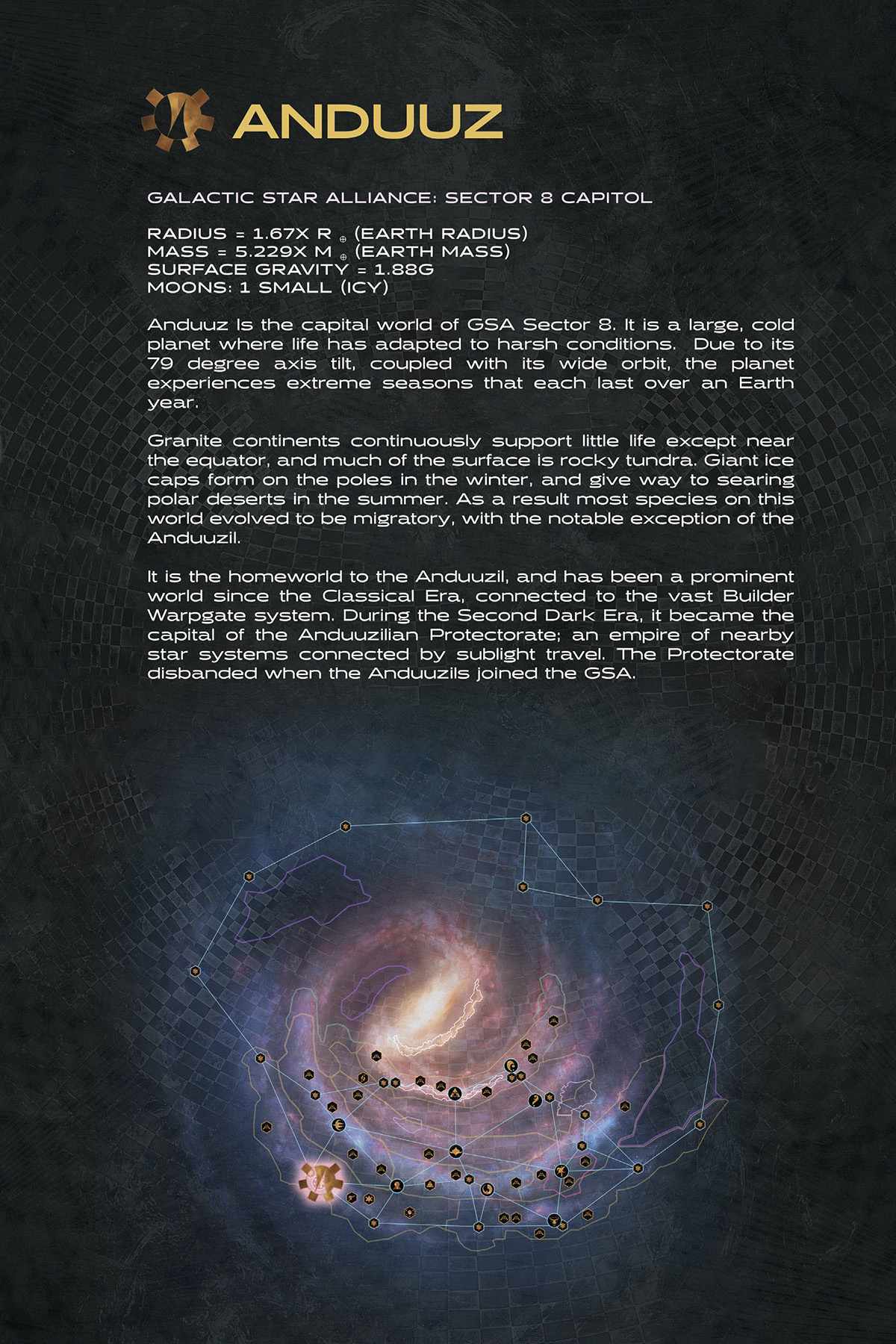
When you get through even just the first chapter, there is already so much to the world and its inhabitants, and the base is set. That’s why we wanted to know if it was a challenge to not pare things down to keep it from being overwhelming.
“I’ll let John talk about some of the more technical stuff but… I have obviously written, married the stories now through Heavy Metal, and this is kind of John’s baby right now with me. I think he’s kind of had it easy. He doesn’t know the other side of that coin which is what you’ve just said. Where for me, we wrote this and we created this for us, first and foremost,” Medney said. “We did not want to pare anything down or curb any of the signs or make it any more palatable than what wanted it to be, which as you know Matt, it’s really freeing when creating something. And that’s the only way we wanted to do story because we wanted to do a story that was so hard in science but yet so thoughtful in the way in which we could interact with aliens that I didn’t want us ever thinking about, ‘Did we go too far into nerdism? Is that too much science? Do we need to bring it back?’ I always looked at the mindset, it needs to have as much science and as much nicheism and nerdism as needed to make us feel good about it when we publish it.”
“That was incredibly well-said. I would say that this story originally was created as… there was a smaller story that was more so the beginning of a larger one that has a very definitive beginning, middle, and end on its own. And then it was seeing past that story is being where we’re going to go. And at that point, needing to… I’d say, quickly as you can establish even more worlds and establish our base so we would be able to utilize it and leverage it into later books,” Connelly said. “I think that recalibration effort that happened sometime… I wouldn’t want to say, maybe half the three quarters away through the first book, especially when we decided, as soon as we knew we were going to have to split even the first story into two.”
“It’s also finding a good place to split the first story into two parts was a difficult task. just to not leave something purely cliffhangery and actually have resolution but knowing that it’s still not the whole of a true arc that you had originally envisioned,” Connelly said. “Yeah. It was difficult but we had to make our peace with it and it helped us to be able to focus as well once we knew that. The sooner we knew that, the better it was to finish the story.”
Yallaweh
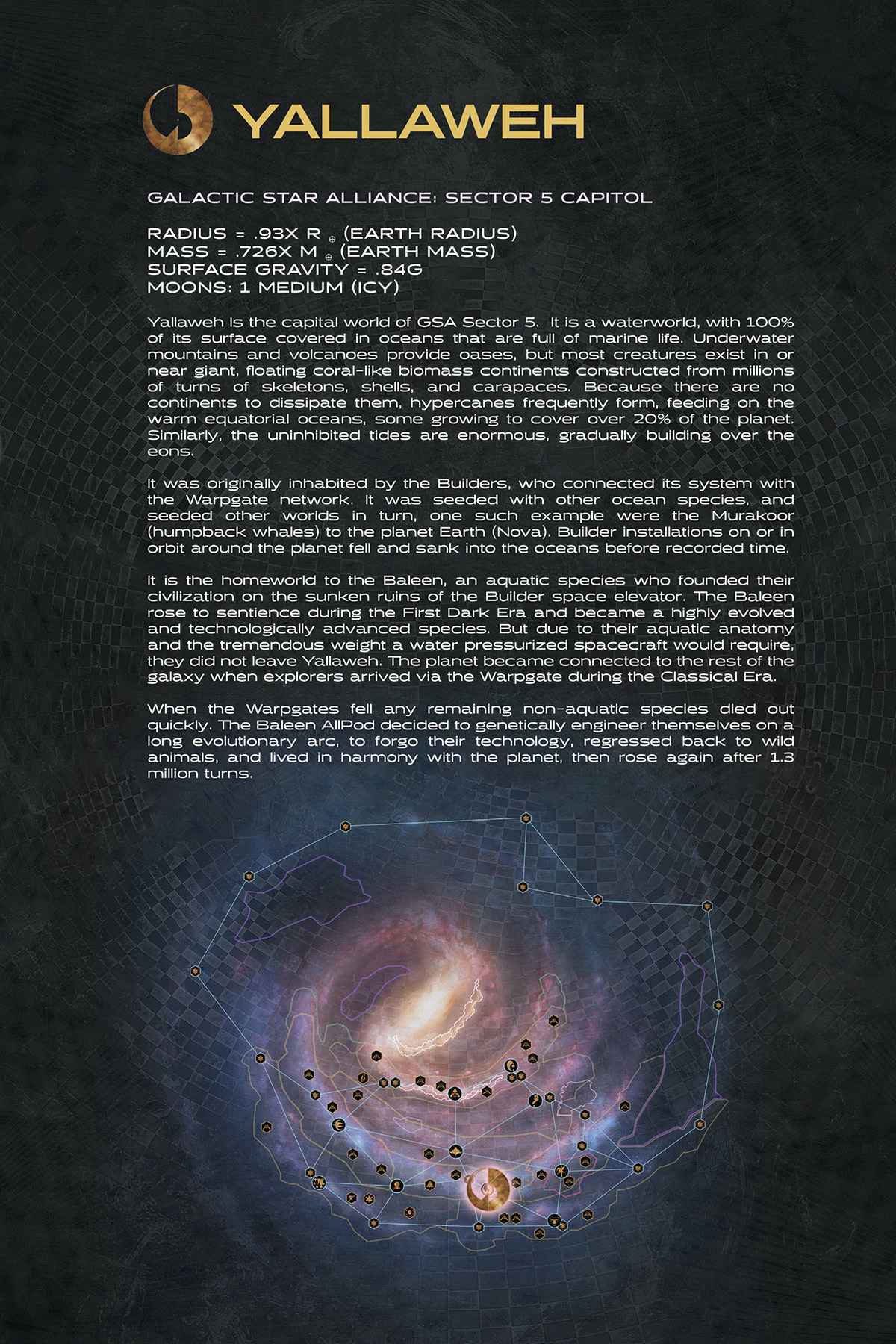
Star Wars
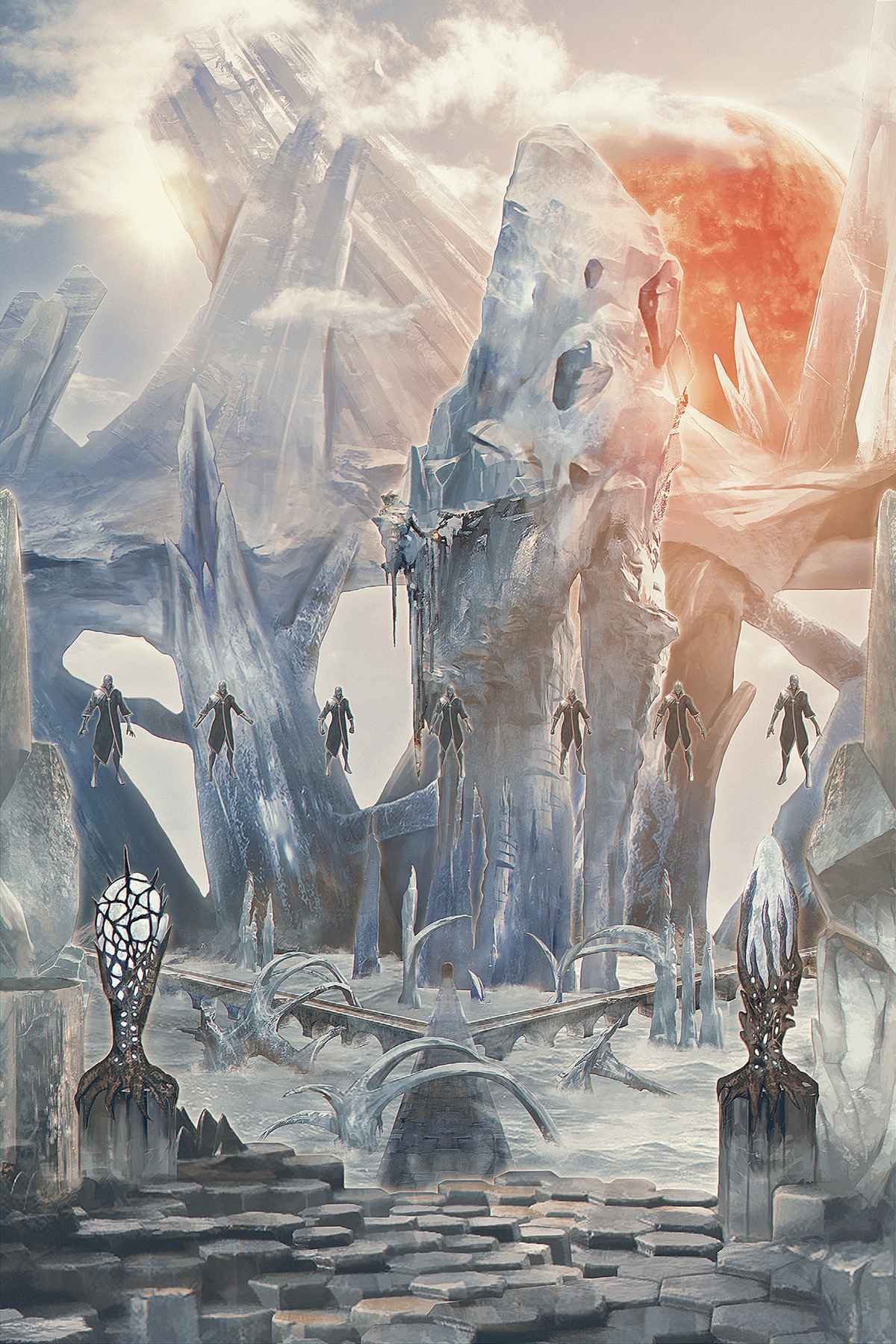
One of the amazing characters you meet early on is Maruk, who also happens to be a massive Star Wars fan, and he is an absolute delight.
“Maruk is a great character for you to tether onto,” Connelly said. “His arc in book two, he’s one of the aliens that we really focused on.
Beyond Kuiper isn’t afraid to embrace and reference pop culture, but it did try and shy away from certain tropes of the genre we’ve seen in other places.
“Yeah, and I think it’s in our main… the core of the story is that there’s a galactic civilization that’s very much aware of humanity and has deemed humanity too hostile of a race to interact with the rest of the known galaxy,” Medney said. “So we are literally unaware of everything that’s going on, and the Kuiper belt is used as a military defense to quarantine any civilization too hostile to interact with the rest of the galaxy. And that as an impetus, I feel it’s pretty unique to us.”
“And then the other thing is that our guiding light and a trope that we struggle with, and honestly probably John struggled with more than me because I’d probably get headaches so I drank a lot because of this, it was science at all cost, right? We never, no matter how much I try to push John into an idea that was not science-based, maybe after throwing an object, he would calm down and explain to me why we couldn’t turn a white hole into a time machine,” Medney said. “But after he got past the laws of physics that I was trying to, I would say, carelessly ignore, we made sure that every aspect of the story was based in hard science.”
“Yes. I would also add that we really wanted to reinforce… I mean to say, not necessarily a supremely novel idea, but we really wanted to reinforce that even if this is a story that of humanity encountering aliens, humanity is only one planet of hundreds of thousands,” Connelly said. “Humanity really has a limit before it can really grow up, and in order to grow up, it needs to be able to hold its place in the universe and it can only do that when it entirely encounters another alien species.”
Stick To Science

When Medney and Connelly say they stick to the science, they mean it, and that influences every part of the story.
“In the second book, our ship, the Nomad, travels to the edge of the Kuiper belt. And on that journey, we stopped at Mars and we stopped at Europa,” Medney said. “We stopped through Saturn. As we’ve said at the beginning of this, the only thing that matters to us is the science. So John, why don’t you explain how we chose the year 2094 as the year in which the Nomad would take this journey to the edge of the Solar System.”
“Okay. Actually if I remember correctly, the first email correspondence between us in 2015 is myself pinging you with a whole bunch of rocketry and telemetry data and I tell you that I found it,” Connelly said. “There’s a particular planetary alignment that in the near future that could totally work for the story, and I plotted the course out and that when we started going back and forth. Part of this pet project from the beginning was I wanted to have this voyage. What would it actually take for a voyage of a spacecraft throughout the Solar System, and trying to make use of either planetary swing, even gravitational slingshot, or just simply alignments of planets where somewhere on the near side of the Solar System we’d visit them, and then we can just bouncing back and cross, for it to cross a Sun-like star, like a star-shaped pentagram. And so from there, that’s really what anchored us in times in the human side.”
“And then I set about actually determining what specs our ship would need in order to achieve it and achieve it in a reasonable time,” Connelly said “One, narratively for our characters, and two, physically because of the immense radiation dangers of long-term space travel which is something that I feel is often underplayed in science fiction. From there we built Nomad. It determined that it needed, a fusion drive, what is our specific impulse, what is the mass flow rate, what type of fuel we’re using, what type of containment, how are you going to handle the dissipation, how we handles radiation, how does the ship generate power, and water thrust capabilities if we are really going to stop at this plant. It needs some sort of landing craft that’s going down to Europa. What is the mass ratio of total payload from start to finish, and you calculate planetary capture three times and slingshot around inside the rings of Saturn.”
“I want to bring the people, ‘This is the Nomad and this is what she can do because these are all the realities, the challenges of space travel. Humans get ready.’ I want space just as much as the next human. It’s going to be hard. We’re going to have to try hard.,” Connelly said.
“When I say the science is as real as you can get, we mean that,” Medney said.
Neutron Star Planet

Now, they still get creative with some of the locations and elements, but again, it has to have some tether to science, no matter how cool and out there the idea is.
“So there’s a planet called Kalea that has this amazing history,” Medney said. “I’ll let John set it up because he almost had a fit from when I wanted a neutron star to be in the center of this planet, just so we’re on the same page. But a teaspoon of a neutron star is denser than our entire solar system combined.”
“Put it this way, a teaspoon of neutron star matter, I think, is about the mass of Mount Everest. An entire star that is many times more massive than the Sun will collapse down to a sphere with a diameter of Manhattan,” Connelly said. “My issues were simple. Matt has asked what if we have a planet with the core that is a neutron star, and a neutron star is so dense that any matter near it either collapses into it and becomes more of the neutron star, at which point if it reaches enough matter it just reaches black hole mass, critical threshold mass and they collapses into a singularity.”
“Or two, if it was only part of a neutron star which is what Matt had asked, I did some physics diving. It takes the crushing gravity of a neutron star to maintain the balance. Because of neutron decay and neutron degeneracy pressure, if you take that teaspoon of neutron star matter away from the neutron star, it’s like setting off an anti-matter bomb,” Connelly said.
“After that, he was like, ‘Okay, what about a white dwarf?’ Just a burning star is not going to work. At that point I was like, ‘Okay.’ Or I think maybe you’re just like, ‘Find a way to make this work.’ I think we’ve screamed a little bit at each other at that point. There was a lot of screaming all about, this is the state of science, this is the state of writing. So then I looked into it and a white dwarf does theoretically cool into a black dwarf, which is then inert and crystallized but is extremely dense,” Connelly said. “Therefore, it would have the same gravity, but it would take, approximately, the lifespan of the universe for a white dwarf to cool to a black dwarf. So at which point we had to decide that one of the alien races, one of the master races from the past had to create this Dyson Sphere around the star to create a temporal bubble to speed up the decay of a white dwarf into a black dwarf which is then shattered to use pieces of it as technology. At some future point in time, a shard of that black dwarf matter decay entered some solar system and became the planet Kalea, which is what rose to mine the metal.”
You’ve got to admit, that’s incredibly impressive. I would’ve given up at Neutron Star.
Nomad The Game?

With a world this rich and detailed, I had to bring up the possibility of using it in a video game, as it would already rival beloved worlds and mythologies of franchises like Mass Effect, Star Wars, Warhammer, and more. So, could we see Kuiper get its own Mass Effect style game?
taken into one of those?
“Mass Effect. Yes to that,” Connelly said.
“I mean, we’ve had a few people tell us that our world-building is as thorough as Warhammer, which is pretty cool to hear,” Medney said.
“We are actively thinking about how to… we see this as a franchise. The books are just the jumping-off point, mostly because we’re both romantics and love the idea of being on paper that you can buy in a bookstore. But this is an epic movie saga, this is an RPG tabletop game, this is a video game universe,” Medney said. “We’re trying to build this transmedia, multimedia Beyond Kuiper playground for people to just sit inside all the lore. Matt, if you look in my office, I literally have the planets that we designed on my wall. I printed them and I mounted them on my wall because each of our planets, to John’s point, took 32 planets that we’ve identified and figured out their mass, density, and radius relative to Earth and then put all of the science in it so that the entire core planetary bodies within the Galactic Star Alliance are relative to Earth so you can understand their size and their capabilities, and John did all that hard math.”
Who knows, maybe one day we’ll be exploring those planets on a console, and I’m very much hoping to see that become a reality.

